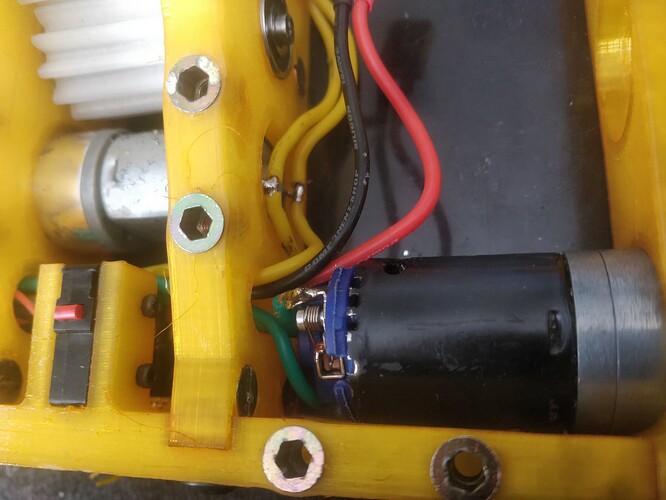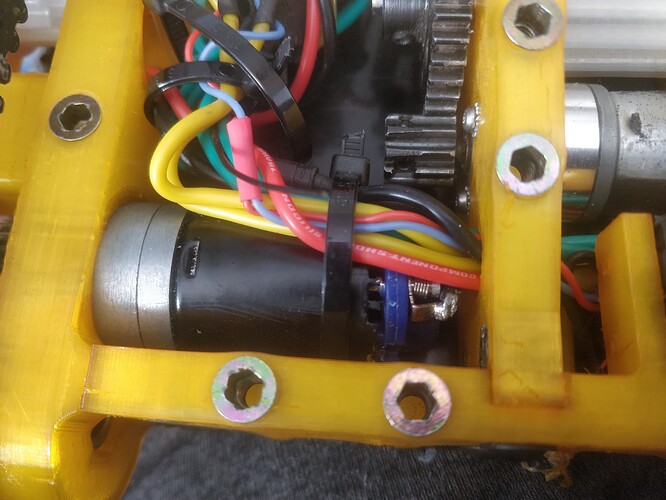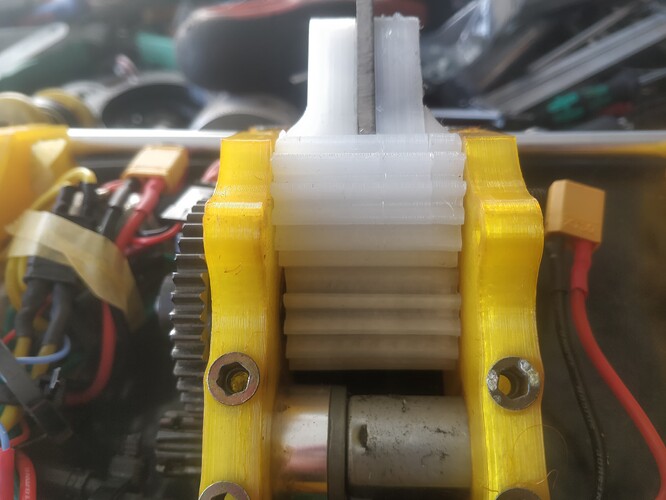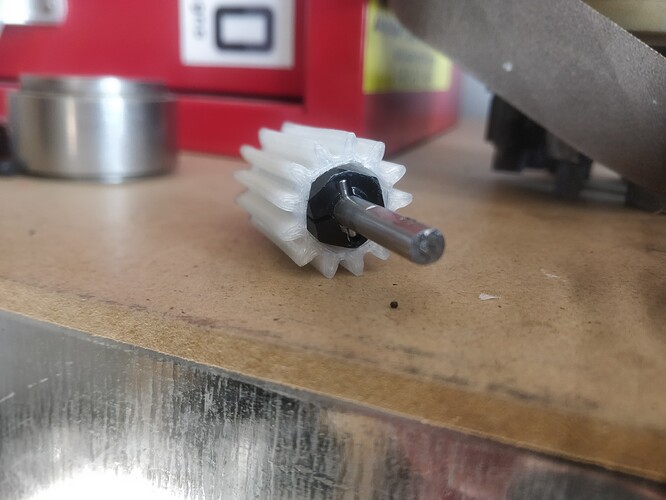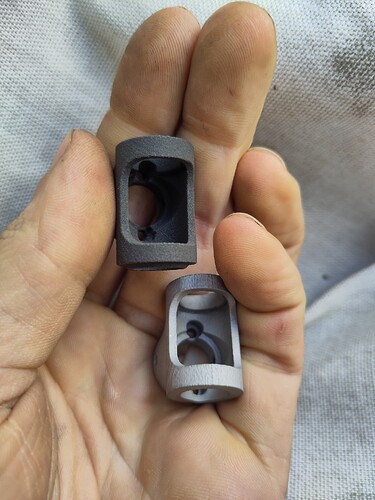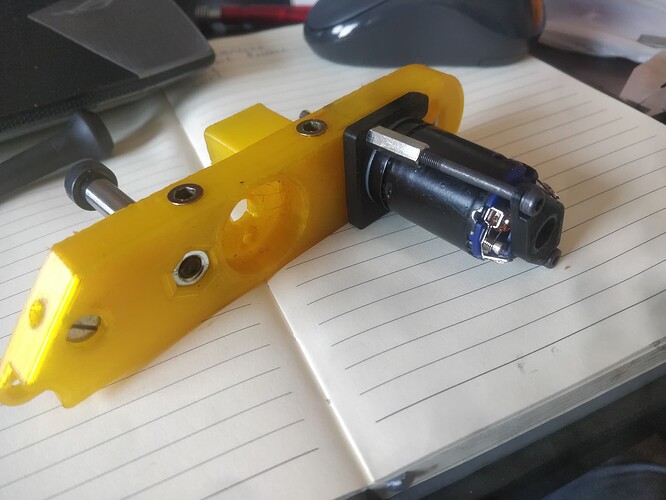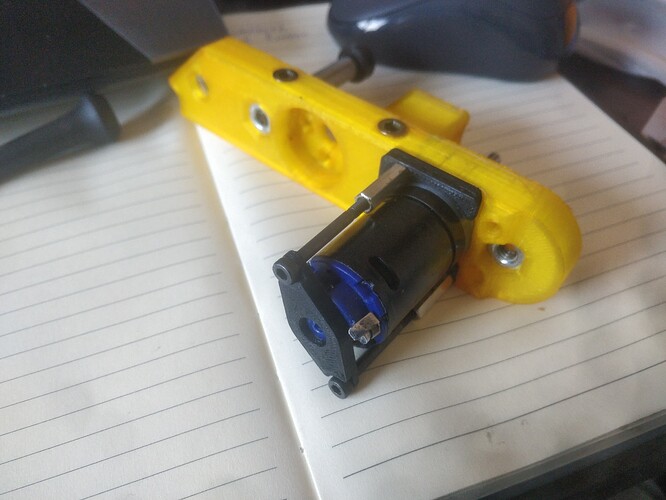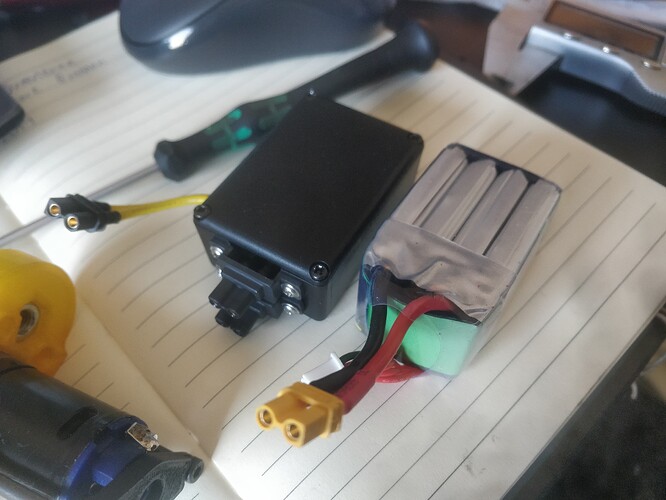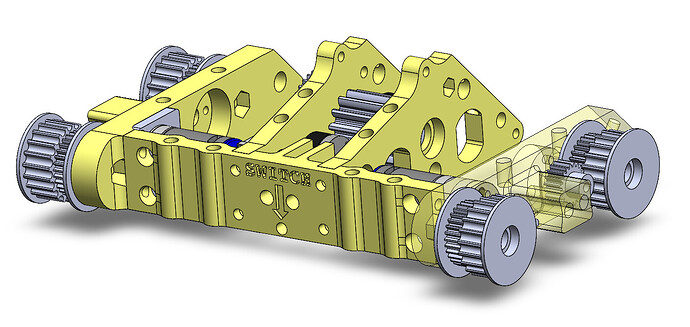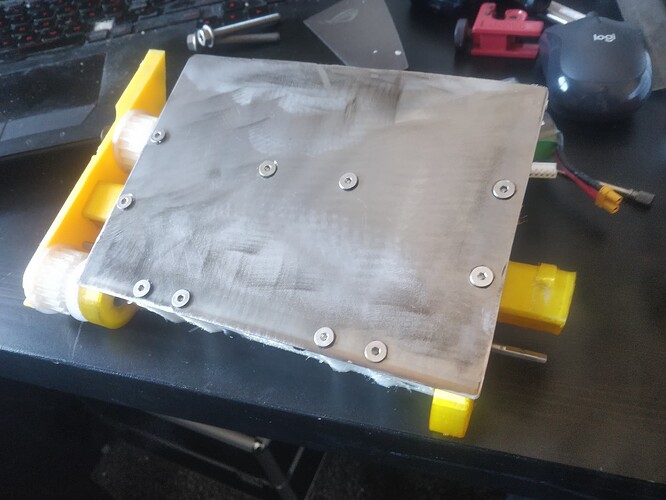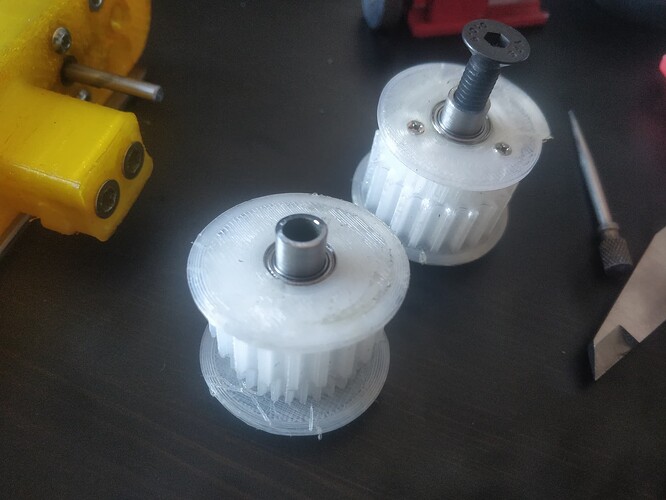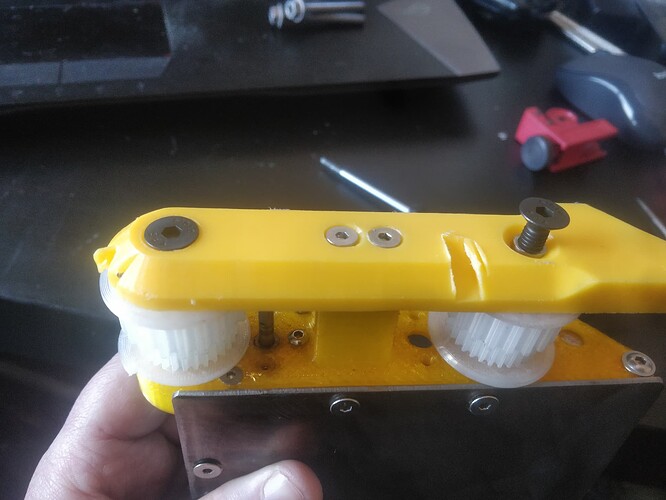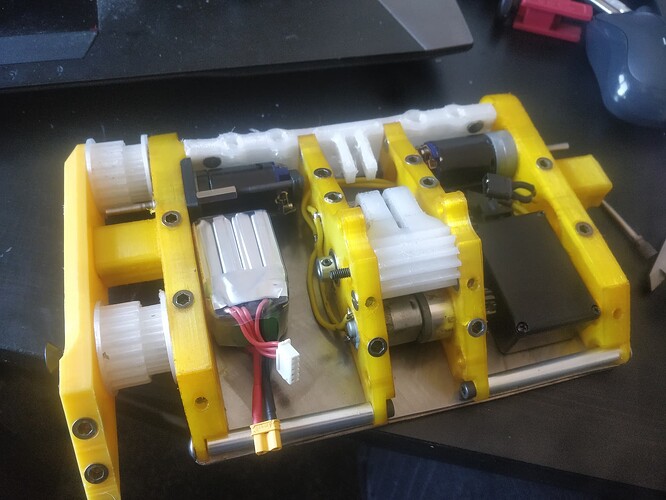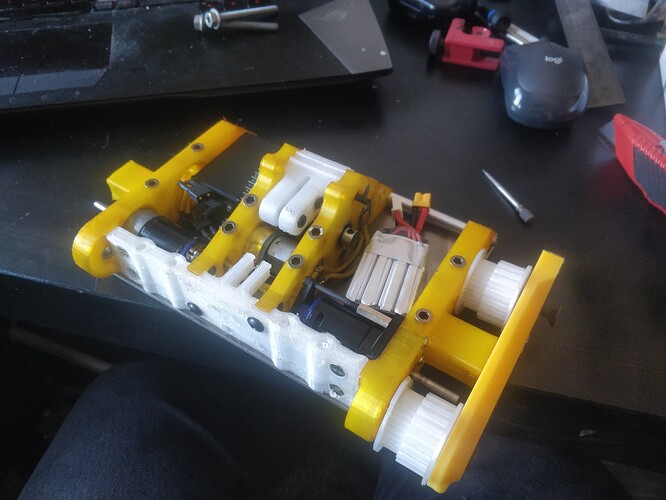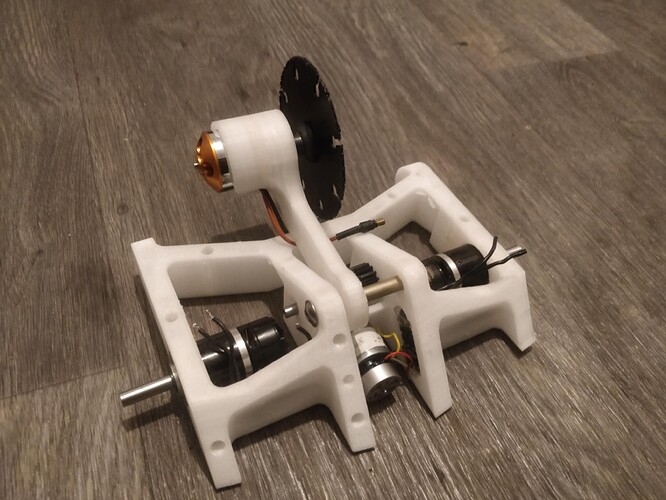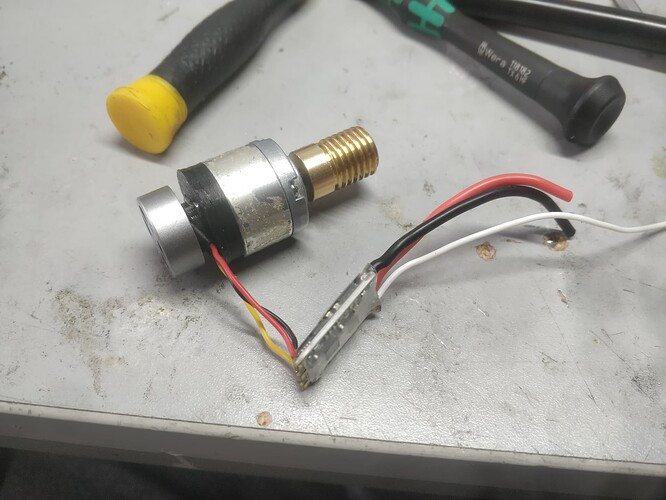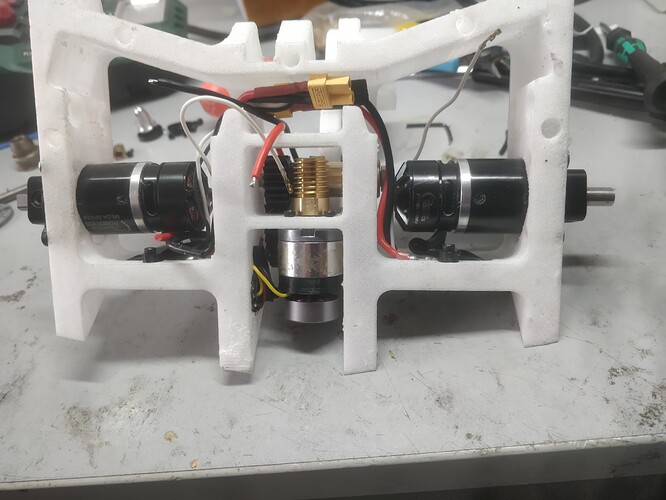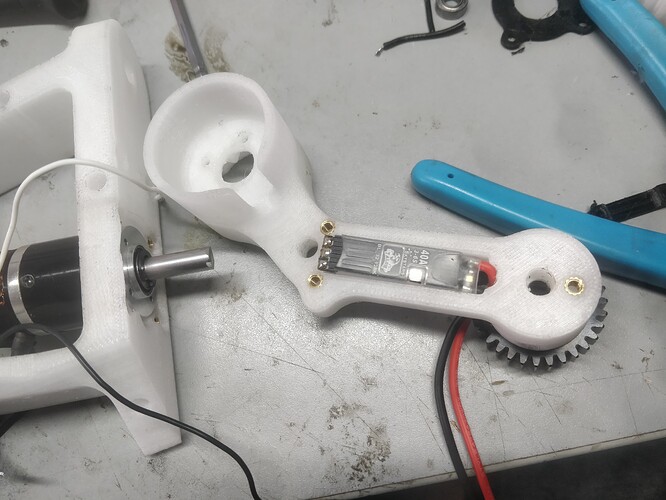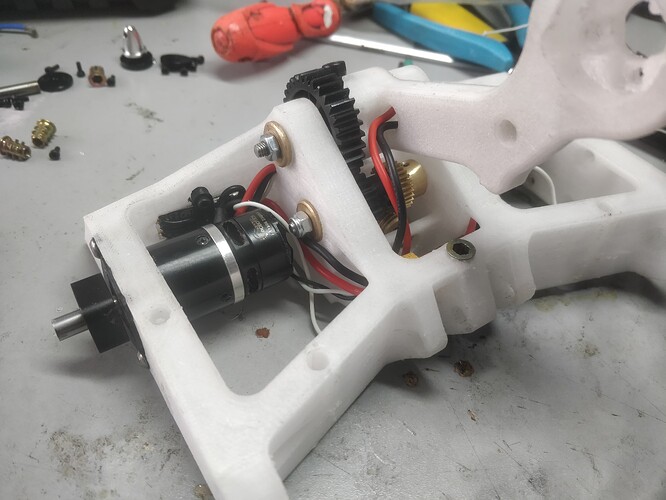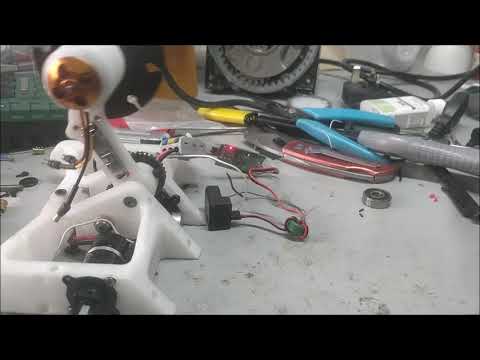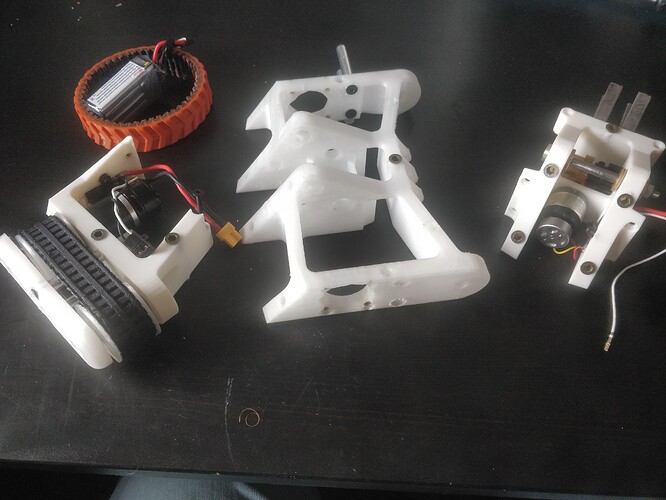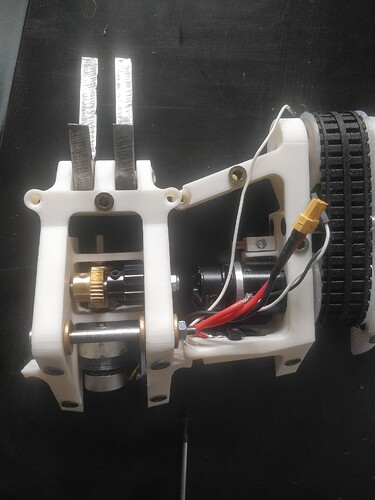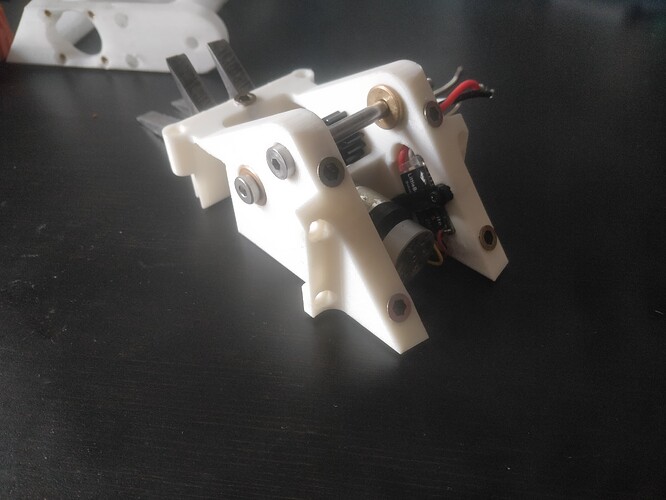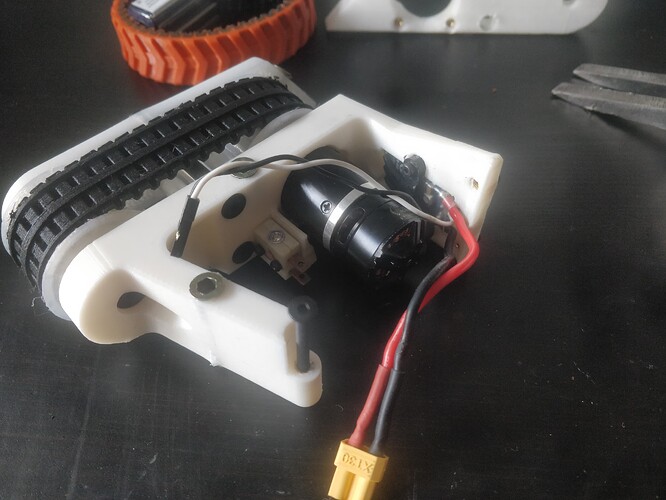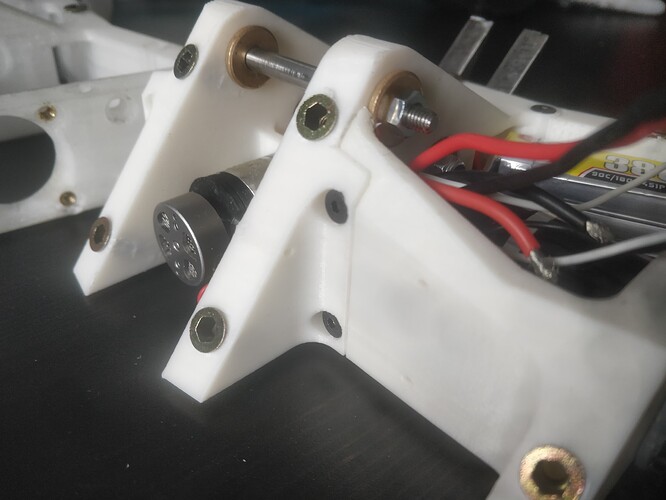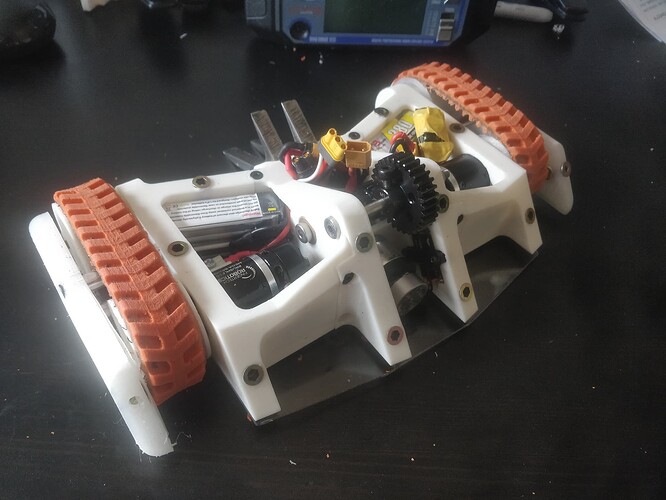MotherLoader T34 has been cracked open for the first time in a little over a year since brawl. I was purposely not touching it primarily so I wouldn’t get distracted and talk myself into building another one of the damned things but also because I believed it to be in a working state.
My intention was to just chuck it at whiteboards even I was feeling masochistic. It turned on and moved for sure but it was sadly far from working.
Worryingly the sheer shock of the beating Andy dished out had knocked the endcaps off the motor. The brushes were just about still on the com but it was barely holding on.
Both sides! While unexpected this tells me it’s not a fluke and it will happen again. My initial instinct was to pull 5mm out of the width each side to squish the motor up against the central axe bulkheads. But I’m actually a little tight on space - especially if I make myself a little gear cover to reduce the pinch points. I think I’m going to make a little brace that retains the motor with tie rods and heat shrink/epoxy the endcap.
Naturally this wasn’t the only problem. The axe was working fine when fired but had evolved itself a 6 pointed clutch (the intermediate nylon gear) and the output gear-cum-axeshaft has a nasty split.
So yes. I tracked the axes system slop to this part of the transmission. I suspected the pins driving the 12mm RC car hexes to have sheared or just plain simple grub screws slipping but it was actually the nylon gear having enough electricity to deform and round out.
I put this down to the properties of the material not playing nicely with the thin (& therefore pliant) geometry of the gear. If the gear was larger diameter or the hex bore smaller I may have had better luck. Perhaps PLA or ABS would be good as a slip on replacement? Considering my options. It’s a relatively easy problem to solve, just a question as to how much work I wish to put in.
Forks, removed completely as they were rubbish. I’m allowing myself a new wedge in 8mm (as I need to get some for Hard Nips) and a new baseplate. I’ll be keeping as much of the chassis as I can. I think I can justify a new rear but other than that everything is kept. Wiring tidied as its not up to scratch.
